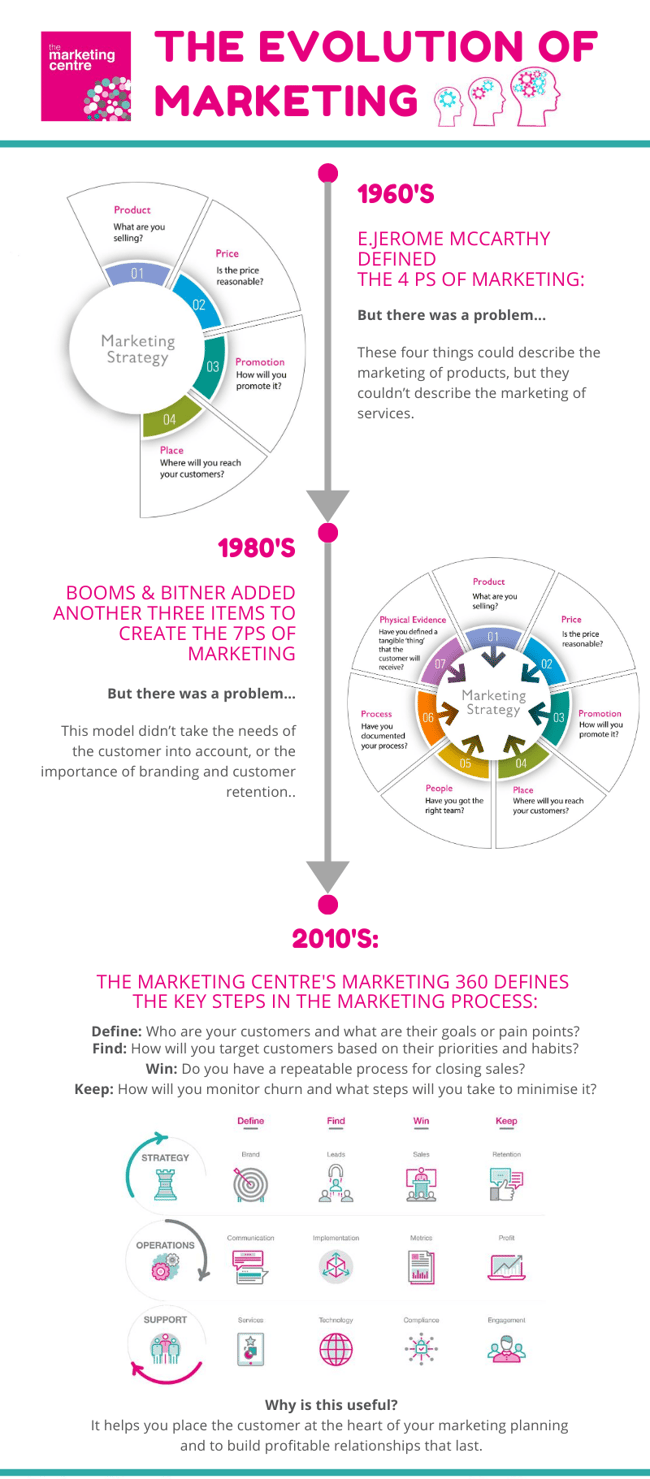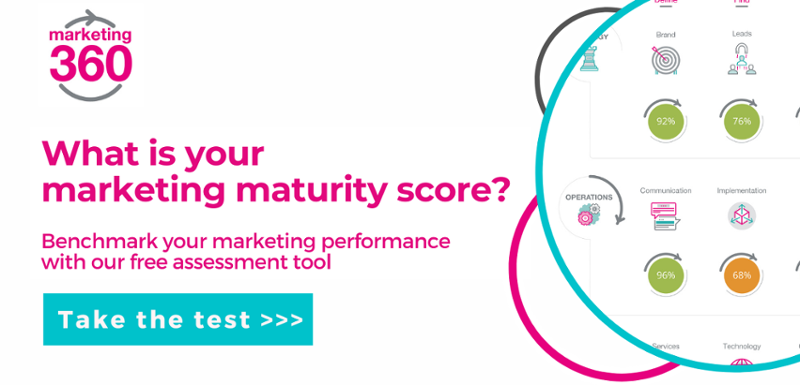The ‘Seven Ps’ and the ‘Four Pillars' of marketing are useful models to understand the marketing department’s role and the key responsibilities of any marketing team.
Many business owners struggle to define what marketing is, even the ones that run successful companies.
Marketing teams get involved in a lot of things, from branding to promotions to websites. But marketing isn’t just a list of jobs-to-be-done, it’s a process. And if you don’t understand each step of that process, there’s a chance you’ll miss an important part of it.
There are plenty of different models out there to describe marketing. In this post, we’re going to look at some of the most popular models, as well as the model that we use when we’re working with our customers.
The Seven Ps of Marketing
Before the seven Ps of marketing there were the four Ps: product, price, promotion and place. These were defined by E. Jerome McCarthy in the 1960s.
In the 1980s, three more Ps were added to this model by a pair of academics called Booms and Bitner. They felt that the four Ps were only able to describe the marketing of products, as opposed to the marketing of both products and services.
The seven Ps model is a tried and tested definition that breaks marketing down into the following elements:
- Product: What are you selling?
- Price: Is the price aligned with the perceived value of the product?
- Promotion: How will you describe your product and what is the right language to help you connect with your audience?
- Place: Where will you reach customers?
- People: Have you got the right service delivery and sales teams in place?
- Process: Have you defined and documented your methods for delivering your end product or service?
- Physical Evidence: Have you defined a tangible “thing” that the customer will receive, even if the service is intangible? (An insurance certificate for an insurance policy is a good example, if you’re stuck on this.)
Looking through these, there are some areas that you might not immediately associate with marketing - such as pricing, sales processes and service delivery. One of the strengths of this model is that it demonstrates how marketing touches every part of your business, not just the tasks that we usually associate with marketing teams.
Want to improve your understanding of marketing?
Download our step-by-step guide to learn everything you need to understand, build and improve your marketing strategy.
However, this model does have a few weaknesses.
First, the customer is nowhere to be seen. As we’re fond of reminding our readers, great marketing starts with the customer.
Second, it mentions process, but it doesn’t capture that marketing is itself a process. As the CIM puts it: “Marketing is the management process responsible for identifying, anticipating and satisfying customer requirements profitably.” Like any other business process, marketing ought to be mapped out, measured and improved over time.
Finally, it ignores the vital role that branding and customer retention play in modern marketing. Ignoring either of these elements would put any business at an enormous disadvantage.
Because of these shortcomings, we developed our own model to define what marketing is and how it adds value. We call it…
The 4 Pillars of Marketing
Our four pillars of marketing model captures the key functions of marketing and arranges them in a sequence, so you can work through them step-by-step:
- Define: Know what your potential customers look like, and what your product or service can do for them.
- Find: Identify ways to target them, based on their behaviour and habits.
- Win: Devise strategies to close sales and create customers.
- Keep: Monitor customer churn (loss) and create retention activities to remedy it.
You can think of the four pillars of marketing as a roadmap or a checklist. It’s simple but effective, which is why our team and our customers return to it again and again.
Note: Want to speak to an experienced marketer about how marketing can grow your business? Our part-time Marketing Directors are here to help. Book a free one-hour consultation.
Our marketing 360 framework maps key business functions - strategy, operations and support - against these four pillars, giving you a comprehensive roadmap that will show you what you need to focus on at each step of the marketing process to improve performance.

Measure your performance against the four pillars of marketing
Our Marketing 360 diagnostic questionnaire will map your performance against the four pillars so you can see what you’re doing well and where you need to focus your efforts.
It only takes 10 minutes. We’ll even provide you with a free report that will give feedback on your results and advice on what to do next.
Take the Marketing 360 today.
Image credit: By Mohsinbl (Own work) [CC BY-SA 3.0], via Wikimedia Commons





